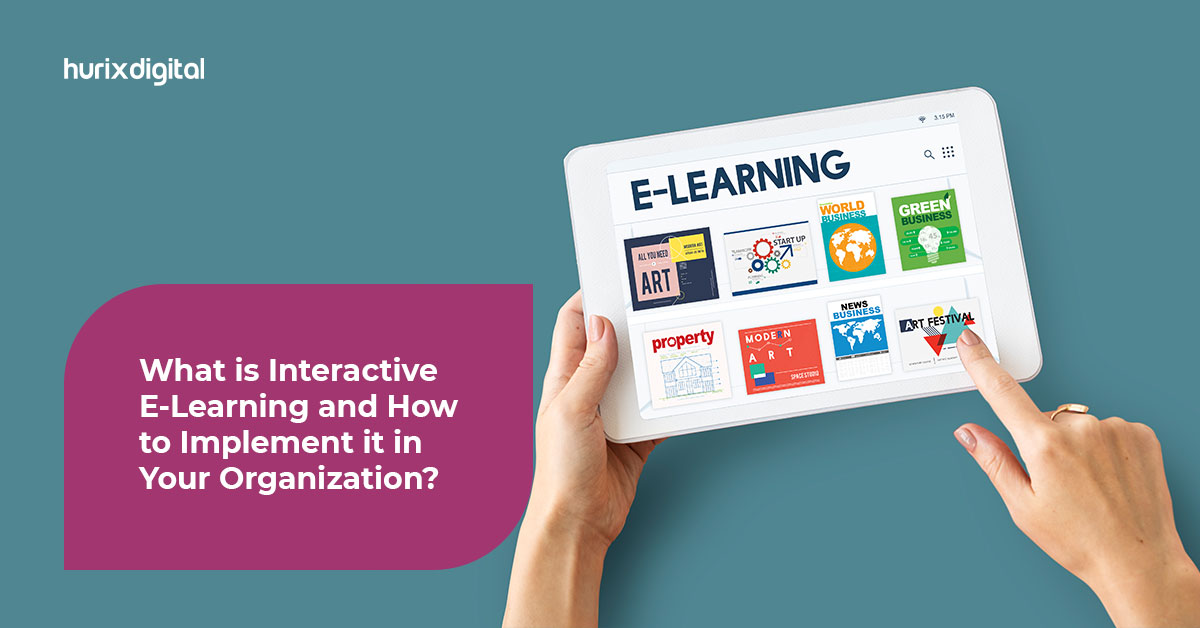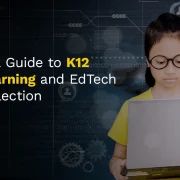
What is Interactive E-Learning and How to Implement it in Your Organization?
Summary
Understand the concept of interactive eLearning, its advantages, and how to implement it within your organization to create engaging, learner-centric educational experiences.
Since the COVID-19 pandemic, it has been almost impossible to find an organization, corporate office, educational institute, etc., that relies solely on physical classes and face-to-face learning.
Before the pandemic, the interactive e-learning trend was gradually increasing, but the sudden shift to a culture of lockdowns led to its instant adaptation. By 2026, the interactive e-learning market is expected to grow by 15% and become a $50 billion industry.
Post-pandemic interactive e-learning has become more flexible and engaging with more advanced collaboration and assessment tools. If you are also looking to adopt interactive e-learning for your organization, you are at the right place.
Let us first start by understanding what interactive e-learning is before we begin to learn ways to implement and adopt it.
What is Interactive e-Learning?
There happens to be a minor difference between e-learning and interactive e-learning.
While e-learning focuses on delivering content and providing learners with access to resources that will help them acquire new knowledge and skills, interactive e-learning focuses on actively involving learners in the learning process and providing them with opportunities to apply what they have learned in the real world.
However, this is not to say that e-learning is not effective. Depending on the situation and demands of the learners, both e-learning and interactive e-learning have proven to be beneficial.
Interactive e-learning utilizes electronic technologies and tools like online courses, virtual classrooms, eBooks, webinars, etc., to facilitate learning. Additionally, it uses interactive multimedia elements, such as videos, animations, simulations, and games, to create a more immersive learning experience.
What Are the Important Elements of Interactive e-Learning?
To successfully implement interactive e-learning, here are some of its key elements you should know. Understanding these key elements in detail will allow you to provide your learners with a more engaging and fruitful experience.
1. Engaging Visuals
Research states that human brains process visual content and images 60,000 times faster than written content. Therefore, interactive e-learning incorporates visually appealing graphics, images, and videos to capture learners’ attention and make the content more memorable.
2. Interactive Activities
Interactive e-learning must provide learners with opportunities to actively engage with the content through quizzes, games, virtual reality simulations, etc.
Augmented virtual reality, for instance, is a very popular e-learning trend nowadays. It has been known to increase engagement, effectively accommodate experiential learning, and bring innovation to learning environments.
Due to its high effectiveness and gaining popularity, the use of virtual reality in the education sector is expected to reach $13,098 million by 2026.
3. Feedback and Assessment
Interactive e-learning should provide learners with feedback on their performance, so they can monitor their progress and identify areas that need improvement.
Assessments can also be integrated into the e-learning experience to help learners evaluate their understanding of the content.
4. Gamification
Gamification involves using game elements, such as points, badges, and leaderboards, to create a more engaging and stimulating learning environment.
5. Collaborations and Discussions
Interactive e-learning can provide learners with opportunities to collaborate with others, such as through discussion forums, team projects, and virtual classrooms.
This helps learners develop their communication and collaboration skills while also improving social learning skills.
How to Implement Interactive e-Learning?
Now that you know what interactive e-learning is and about its important elements, let’s move on to understanding how you can implement it in your organization.
1. Identify the Learning Objectives
Before you start developing interactive e-learning modules, it is important to identify the learning objectives and what skills or knowledge your employees need to acquire.
Here is how you can identify the learning objectives:
- Recognize the skills, knowledge, or competencies that learners need to acquire to perform their job roles.
- Identify and address the performance gaps. Observe closely if the gaps persist for a long time.
- Consult with subject matter experts to identify the specific knowledge or skills your learners need to acquire and why.
- Ensure your learning objectives are SMART – Specific, Measurable, Achievable, Relevant, and Time-bound.
2. Choose the Right e-Learning Platform
Many interactive e-learning platforms are available, each with its strengths and weaknesses. Choose an e-learning platform that can deliver the interactive learning experience you want and integrate with your existing systems.
Here are some things you must check for while choosing an interactive e-learning platform:
- User interface
- Functionality and features
- Integration capacities
- Accessibility
- Flexibility
- Scalability
- Support and customer services
- Security
3. Provide Feedback and Assessment
Interactive e-learning can only be successful when it provides immediate feedback to learners and includes assessments to help learners monitor their progress and identify areas that need improvement.
Be specific and constructive while providing feedback. Offer specific suggestions for improvement and provide examples to help the learner understand how to apply the feedback.
Also, ensure that you follow up after the feedback to ensure that the feedback has been used by the learners constructively and positively. Additionally, this can help you identify any further support or resources they may need to improve their performance.
4. Encourage Collaboration
Interactive e-learning can provide opportunities for employees to collaborate, share knowledge, and work together to solve problems. Here are some tools you can use to promote collaboration and social learning:
- Chat tools like Microsoft teams or Slack
- Video conferencing tools like Zoom, Skype, or Google Meet
- Collaboration platforms like google drive or Microsoft OneDrive
- Learning management systems (LMS) platforms like Hurix, Moodle, or Canvas
Closing Thoughts
Are you feeling overwhelmed after reading about the numerous ways you can implement interactive e-learning for your organization? If yes, do not worry. Reach out to us at Hurix to help you implement the best e-learning strategies for the benefit of your learners and organization.
Hurix Digital is a leader in the industry of e-learning solutions for higher education institutions, corporate offices, business organizations, etc. A few of the many services we offer are e-learning and training solutions, digital content transformation, K-12 content solutions, and animation and video services.
Get in touch with our expert team now to get started.

Senior Vice President
Julia brings over 20 years of global experience in digital learning and business strategy. She specializes in client success, enterprise learning solutions, and driving growth through innovation, with a focus on AI, VR, and emerging technologies across diverse industry verticals.




